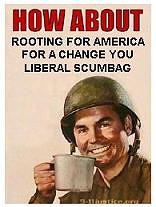The only gap that matters, pt. 3 - There are few elements of education in this country that have been as extensively researched (all to no apparent gain in the view of this lowly scribbler) than per-pupil spending (PPS) and its impact on educational outcomes. An article presented in the New York Times last week highlighted the variances in per-pupil spending between New Jersey school districts. (A separate Times graphic noted the most significant disparities in state classroom expenditures.) In describing New Jersey's Sea Isle school district spending $33,805 per child versus the Guttenberg district spending $7,426 per child, the Times joined the education establishment on the mourner's bench as it waxed melodramatically about the differences in spending between districts. The disparity in student spending has prompted renewed calls from school officials and parents for an overhaul of the school financing system, which critics say has shortchanged many districts while directing the bulk of state aid to 31 poor urban areas identified as Abbott districts under a landmark court case.
State legislators have been working on a new state aid formula, but their efforts appear to have stalled in recent weeks.As discussed elsewhere, New Jersey's Abbott districts came about as part a "remedy" for educational disparities that the New Jersey Supreme Court found to be inadequate and unconstitutional. Based on that 1990 ruling, 31 urban districts were slated to receive additional state monies to bring PPS up to, or in many cases above what is spent in other districts (as noted by the Times.)
"That is a big spread, and equity is something that needs to be addressed in the anticipated new school funding formula," said Lynne Strickland, executive director of the Garden State Coalition of Schools, which represents 150 suburban school districts.
Many of the state’s Abbott districts also spend much more than the state average. Asbury Park schools, for instance, are spending $19,102 per student this year, according to the survey, and Newark schools $17,974 per student.The NYT greek chorus notwithstanding, for the most part, per-pupil spending is in and of itself is a useless metric, as it can include things as diverse as expenses for school construction, teacher's salaries, administration and nursing/guidance counselor services. And while educators bleat about the effects of variances in PPS on the quality of the educational experience, there is not a scintilla of data showing a direct link between PPS and educational outcomes. As discussed here and here, PPS is no more of a determinant of success in school than is the ratio of sunny school days to cloudy days per year.
The best proof of this underlies the very "disparities" that the Times purports to expose. Thanks to the No Child Left Behind (NCLB) legislation, schools are required to report on, among other things, their Adequate Yearly Progress in improving student achievement and test scores. If we look at New Jersey's NCLB reporting for test scores, particularly those of elementary school students taking the 2004-5 New Jersey Assessment of Skills and Knowledge (NJ ASK), many of the school districts spending the least per pupil outperformed districts that spent more than twice as much.
Although exact year-to-year comparisons are not available presently, the following may be informative as it pertains to PPS. According to the Times, New Jersey's Harrison Township district will spend $8,286 per student in the 2006-7 school year - well below the state average of $12,098 per pupil. Nevertheless, a higher percentage of Harrison Township students tested "proficient" in reading and math on the 2004-5 NJ ASK than did students in the Hoboken City district. This was in spite of the fact that the Hoboken City district spent $19,102 per child in the 2006-7 school year, and presumably spent more than Harrison Township in 2004-5. (86.8 percent of students were proficient in reading and 54.6 percent proficient in math for Harrison Township versus 69.3 percent of students displaying proficiency in reading and 48.6 percent in math for Hoboken City.)
Similarly, students in the Alpine Boro district were bested by their peers in the afore-mentioned Guttenberg Town district on the order of 73.4 percent proficiency in reading and 59.3 percent in math on the 2004-5 NJ ASK for the Guttenberg district versus 68.2 percent proficiency in reading and 26.1 percent math proficiency for Alpine Boro. (Never mind that Alpine Boro will spend nearly three times as much per student in 2006-7 as will Guttenberg Town, at $21,534 versus $7,426 for Alpine Boro and Guttenberg Town respectively.)
When all of this is taken in the broadest context, the Left's pining for more money for education is part and parcel of two longstanding trends of liberal behavior. First, progressives are enamored with simple-minded reductionism. Whether they are distilling multifactoral climate systems down to the impact of CO2 concentrations on weather, concluding that poverty is the sole cause of crime or overstating the case for increased spending as a means of improving educational outcomes, the Left is especially wont to provide dumbed-down answers to complex problems.
More significantly, no matter the concern, the Left proposes exactly the same solutions. Irrespective of the situation, the fix always involves increased spending and taxation, an expansion of government intervention and more onerous regulation. To be sure, "solving" the problem is a mere stop on the road (or perhaps more accurately, a bump in the road) to collectivism.











.jpg)









No comments:
Post a Comment